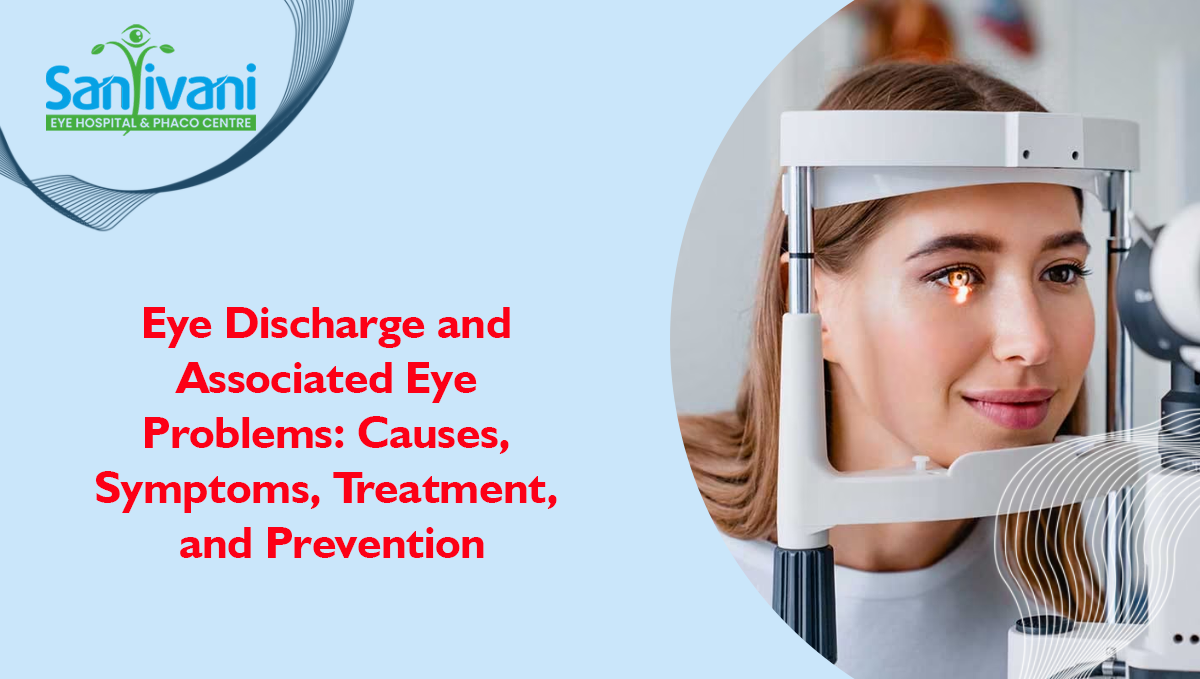
Eye Discharge and Associated Eye Problems: Causes, Symptoms, Treatment, and Prevention
Introduction
Eye discharge, also known as "eye gunk" or "eye mucus," is a common eye problem that can be caused by various factors, ranging from infections to allergies. While occasional eye discharge is normal, persistent or excessive discharge can indicate underlying eye problems that require attention. Understanding the causes, symptoms, treatment options, and preventive measures associated with eye discharge is crucial for maintaining optimal eye health.
Causes of Eye Discharge:
- 1. Bacterial Infections: Bacterial infections such as conjunctivitis (pink eye) can cause eye discharge, often accompanied by redness, itching, and irritation.
- 2. Viral Infections: Viral infections, including the common cold or flu, can lead to watery discharge from the eyes, along with other symptoms such as fever and fatigue.
- 3. Allergies: Allergies to pollen, dust, pet dander, or other environmental allergens can trigger eye discharge, along with itching, redness, and swelling.
- 4. Blocked Tear Ducts: Blocked tear ducts can result in excessive tearing and discharge, especially in infants and young children.
- 5. Dry Eye Syndrome: Inadequate tear production or poor tear quality can cause dryness and irritation, leading to the production of thick, stringy discharge.
- 6. Foreign Bodies: Foreign particles or debris in the eye can cause irritation and discharge as the eye attempts to flush out the irritants.
- 7. Contact Lens Wear: Improper use or hygiene of contact lenses can increase the risk of eye infections and discharge.
- 8. Conjunctival Irritation: : Irritants such as smoke, pollution, or chemicals can irritate the conjunctiva, leading to eye discharge.
Symptoms of Eye Discharge:
- 1. Excessive Tearing: Excessive tearing or watery eyes may accompany eye discharge, especially in cases of blocked tear ducts or allergies.
- 2. Crusty Eyelids: : Upon waking up, crusty or sticky eyelids may indicate the presence of dried discharge.
- 3. Redness and Irritation: Eye discharge is often accompanied by redness, itching, irritation, or a gritty sensation in the eyes.
- 4. Blurry Vision: In some cases, eye discharge can temporarily blur vision, particularly if it accumulates on the surface of the eye.
- 5. Sensitivity to Light: Increased sensitivity to light (photophobia) may occur along with eye discharge, especially in cases of viral or bacterial infections.
Treatment Options:
- 1. Warm Compress: Applying a warm compress to the eyes can help loosen dried discharge and soothe irritation.
- 2. Eye Drops: Over-the-counter or prescription eye drops may be recommended to alleviate symptoms such as redness, itching, and dryness associated with eye discharge.
- 3. Antibiotic Ointment or Drops: : In cases of bacterial conjunctivitis, antibiotic ointment or eye drops may be prescribed to treat the infection.
- 4. Antihistamines: For eye discharge caused by allergies, oral antihistamines or antihistamine eye drops can help relieve symptoms.
- 5. Tear Duct Massage: Gentle massage along the tear duct area can help open blocked tear ducts and promote drainage.
- 6. Artificial Tears: Lubricating eye drops or artificial tears can help alleviate dryness and discomfort associated with eye discharge.
- 7. Avoiding Irritants: Avoiding exposure to known irritants or allergens can help prevent or minimize eye discharge.
Preventive Measures:
- 1. Good Hygiene: Practice good hygiene habits, including washing your hands frequently, especially before touching your eyes.
- 2. Proper Contact Lens Care: If you wear contact lenses, follow proper hygiene practices, including cleaning and disinfecting your lenses as directed.
- 3. Avoid Rubbing Eyes: Avoid rubbing or touching your eyes excessively, as this can exacerbate irritation and spread infection.
- 4. Allergen Avoidance: Identify and avoid allergens that trigger eye discharge, such as pollen, dust, or pet dander.
- 5. Regular Eye Exams: Schedule regular eye exams with an eye care professional to detect and address any underlying eye conditions promptly.
- 6. Stay Hydrated: Drink an adequate amount of water to maintain proper eye hydration and tear production.
- 7. Protective Eyewear: Wear protective eyewear, such as goggles, when engaging in activities that may pose a risk of eye injury or irritation.
Conclusion :
In conclusion, eye discharge can result from various underlying causes, including infections, allergies, and irritants. While occasional eye discharge is normal, persistent or excessive discharge may indicate an underlying eye problem that requires attention. By understanding the causes, symptoms, treatment options, and preventive measures associated with eye discharge, individuals can take proactive steps to maintain optimal eye health and prevent complications. If you experience persistent or severe eye discharge, consult with an eye care professional for proper evaluation and management.